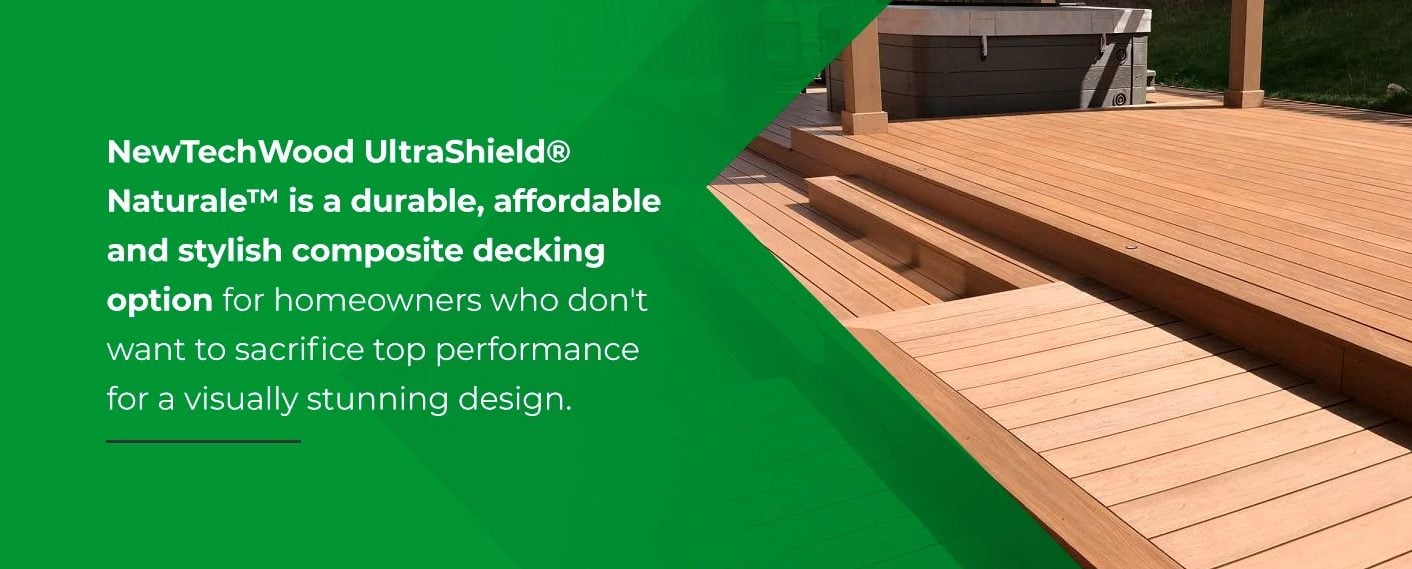Plywood deck enhances outdoor spaces by providing a stable, durable surface for various activities. It is a cost-effective solution for improving aesthetics and functionality.
Creating a plywood deck involves selecting the right type of plywood, ensuring proper installation techniques, and sealing it effectively to protect against weather elements. With the right preparation and maintenance, a plywood deck can offer years of enjoyment and versatility for outdoor living.
Whether used for a small balcony or a large backyard area, a plywood deck can be customized to suit different styles and preferences. This versatile material is a popular choice for homeowners looking to upgrade their outdoor spaces without breaking the bank.

Credit: www.newtechwood.com
Choosing The Right Plywood
Preparing The Outdoor Space
Transform your outdoor space with a plywood deck, offering a versatile and cost-effective solution for creating a functional and appealing outdoor area. With its easy installation and customizable design, a plywood deck is an ideal choice for enhancing your outdoor living experience.
Clearing And Leveling
Ensure the ground is clear of debris. Level the surface for a stable foundation.
Waterproofing The Substructure
Protect the substructure with a waterproofing membrane. Prevent moisture damage.
Installation Process
Installing a plywood deck is a crucial step in ensuring the durability and longevity of your outdoor space. The installation process involves laying the plywood sheets, followed by securing and sealing them properly to protect against moisture and wear.
Laying The Plywood Sheets
Laying the plywood sheets is the first step in the installation process. It is essential to carefully measure and cut the plywood to fit the dimensions of the deck. Ensuring that the sheets are properly aligned and securely fastened is crucial to prevent any movement or shifting over time. It’s important to leave a small gap between the sheets to allow for natural expansion and contraction due to changes in temperature and humidity.
Securing And Sealing The Plywood
Once the plywood sheets are in place, the next step is to secure them properly. This may involve using screws or nails to anchor the sheets to the deck frame, ensuring that they are firmly in place. Afterward, the plywood should be sealed with a weatherproof sealant to protect against moisture and water damage. This step is essential for maintaining the integrity of the plywood deck and preventing warping or deterioration over time.

Credit: safavieh.com
Finishing Touches
Once you have laid down your plywood deck, it’s time to add the finishing touches that will enhance its appearance and functionality. This section will guide you through the important steps of staining or painting the plywood, as well as adding railing and accessories that can give your deck a polished look.
Staining Or Painting The Plywood
One of the first decisions you’ll need to make is whether you want to stain or paint the plywood surface. Both options have their pros and cons, so it’s important to consider your preferences and the specific requirements of your deck.
Staining not only enhances the natural beauty of the wood but also protects it from the elements. Look for a high-quality exterior wood stain that is water-resistant and provides UV protection. Apply the stain evenly using a brush, roller, or sprayer, following the manufacturer’s instructions. Allow the stain to dry completely before moving on to the next step.
If you prefer a different aesthetic or want to add a pop of color, painting the plywood deck is a great option. Choose an exterior paint that is specially formulated for decks and can withstand foot traffic and weather conditions. Before painting, ensure that the surface is clean and free from any dirt or debris. Apply the paint using a brush or roller, following the recommended number of coats, and allow sufficient drying time between each coat.
Adding Railing And Accessories
Installing a railing not only adds a safety element to your deck but also contributes to its overall design. Choose a railing style that complements the aesthetic of your deck and meets local building codes. Railing materials can range from traditional wood to modern metal or even glass. Consider the durability, maintenance requirements, and visual appeal of each option before making your decision. Install the railing securely, ensuring it is level and sturdy.
Once the railing is in place, you can further enhance your deck with accessories that suit your needs and preferences. Some popular options include:
- Outdoor lighting fixtures to illuminate the deck area during the evening.
- Comfortable seating arrangements, such as chairs, benches, or even a hammock, to create a relaxing outdoor oasis.
- Potted plants or flower boxes to bring nature’s beauty to your deck.
- Awnings or umbrellas to provide shade and protection from the sun.
Consider these options and choose accessories that will make your deck a comfortable and inviting space. Remember to maintain and clean your deck regularly to ensure its longevity and continued enjoyment.
Maintenance And Longevity
Enhance your plywood deck’s durability with regular maintenance routines for increased longevity. Proper care such as sealing and cleaning can protect the wood from wear and tear, ultimately extending its lifespan. Regular inspections also help in identifying potential issues early on to prevent costly repairs.
Regular Inspections
Regular inspections are crucial for maintaining the longevity of your plywood deck. By conducting routine checks, you can identify any signs of damage or wear and tear before they worsen. Inspecting your deck regularly allows you to address issues promptly, reducing the risk of extensive damage and costly repairs.
During your inspections, pay close attention to any signs of rot, decay, or warping. Look for areas where the plywood may have become soft or discolored, as this could indicate water damage. Additionally, check for any loose or protruding nails, as these can pose a safety hazard. By promptly addressing these issues, you can ensure the structural integrity of your deck remains intact.
Protective Coatings
Applying protective coatings is essential for preserving the longevity of your plywood deck. These coatings provide a barrier that shields the wood from moisture, UV rays, and other external factors that can cause damage.
Choose a high-quality, weather-resistant coating that is suitable for plywood. Before applying the coating, ensure that the deck is clean and free from any dirt or debris. Follow the manufacturer’s instructions for application, and consider applying multiple coats for added durability.
Protective coatings not only enhance the appearance of your plywood deck but also extend its lifespan. They help prevent moisture from seeping into the wood, reducing the risk of rot, warping, and mold growth.
In addition to applying protective coatings, consider using mats or rugs in high-traffic areas to minimize wear and tear. This simple measure can significantly prolong the lifespan of your plywood deck.
Frequently Asked Questions On Plywood Deck
How Do You Build A Plywood Deck?
To build a plywood deck, start by measuring and marking the area, then cut and lay the plywood sheets. Use screws to secure the plywood to the joists, leaving a 1/8-inch gap between sheets. Apply a waterproofing membrane and seal the edges to prevent moisture damage.
Finally, add your choice of finishing, such as paint or stain.
What Are The Advantages Of A Plywood Deck?
Plywood decks offer several advantages. They are cost-effective, durable, and versatile. Plywood is resistant to warping and cracking, making it ideal for outdoor use. It provides a stable surface for walking and can be easily customized with different finishes or coatings.
Additionally, plywood is easy to work with and can be cut to fit any shape or size.
How Long Does A Plywood Deck Last?
The lifespan of a plywood deck depends on several factors, including the quality of the plywood, maintenance, and weather conditions. With proper care and regular maintenance, a plywood deck can last up to 20 years or more. Regular inspections, cleaning, and sealing can help prolong its lifespan and ensure its durability over time.
Can I Use Plywood For A Rooftop Deck?
Yes, plywood can be used for a rooftop deck. However, certain considerations should be taken into account. Ensure the plywood is approved for outdoor use and carries a suitable grade stamp. It’s crucial to create proper drainage to prevent water accumulation and damage to the roof structure.
Consult a professional to determine the best plywood type, thickness, and installation methods for your specific rooftop deck project.
Conclusion
A plywood deck offers a cost-effective and durable solution for outdoor spaces. With its versatility and strength, plywood can be a practical choice for enhancing your outdoor living area. By following the proper installation and maintenance techniques, you can enjoy a beautiful and long-lasting plywood deck for years to come.


